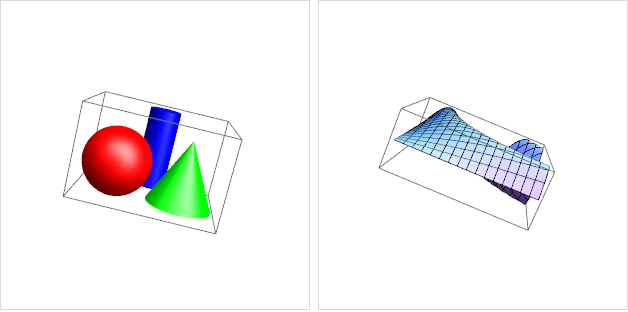It got a bit out of hand, but here's a way to construct a ViewMatrix pair from the triple ViewVector, ViewAngle, and ViewVertical. The left figure is the Graphics3D object using ViewVector, ViewAngle, and ViewVertical and the right is the one using ViewMatrix. If you rotate the left figure or scale it (by dragging the figure while keeping Alt depressed), the ViewMatrix is updated automatically.
DynamicModule[{tt, pp, bb, gr, center, scale, v1, vv,
theta, phi, alpha, vert, viewAngle},
gr = {Cuboid[{-1, -1, -1}, {0, 0, 0}],
Cuboid[], {Red, Cuboid[{-1, 0, 0}, {0, 1, 1}]},
{Blue, Cuboid[{2, 0, 1}, {3, 1, 2}]}};
bb = PlotRange[Graphics3D[gr]];
scale = 1/Abs[#1 - #2] & @@@ bb;
center = Mean /@ bb;
vv = {{6, 5, 2}, Mean /@ bb};
v1 = (vv[[1]] - center);
vert = {0, 0, 1} - {0, 0, 1}.v1 v1;
viewAngle = 50 Degree;
theta[v1_] := ArcTan[v1[[3]], Norm[v1[[;; 2]]]];
phi[v1_] := If[Norm[v1[[;; 2]]] > .0001, ArcTan[v1[[1]], v1[[2]]], 0];
alpha[vert_, v1_] := ArcTan[{-Sin[phi[v1]], Cos[phi[v1]], 0}.vert,
Cross[v1/Norm[v1], {-Sin[phi[v1]], Cos[phi[v1]], 0}].vert];
tt[v1_, vert_, center_, r_] := TransformationMatrix[
RotationTransform[-alpha[vert/scale, v1], {0, 0, 1}].
RotationTransform[-theta[v1], {0, 1, 0}].
RotationTransform[-phi[v1], {0, 0, 1}].
ScalingTransform[r {1, 1, 1}].
TranslationTransform[-center]];
pp[ang_] := {{1, 0, - Tan[ang], 1}, {0, 1, - Tan[ang ], 1}, {0,
0, -Tan[ang ], 0}, {0, 0, -2 Tan[ang] , 2}};
Panel[Column[{Labeled[#,
Style["Transforming ViewVector/ViewVertical/ViewAngle to ViewMatrix",
15, FontFamily -> "Helvetica", Bold],
Top, Background -> White, Frame -> True, FrameStyle -> Gray] &@
Grid[{
{Labeled[Dynamic@
Graphics3D[{gr}, Axes -> True, AxesLabel -> {"x", "y", "z"},
ViewAngle -> Dynamic[viewAngle],
ViewVector -> Dynamic[vv, (vv = #; center = vv[[2]]; v1 = vv[[1]] - center) &],
ViewVertical -> Dynamic[vert],
ImageSize -> 270],
Style["ViewVector, ViewVertical, ViewAngle", FontFamily -> "Helvetica", Bold],
Top, Frame -> True],
Labeled[Dynamic@Graphics3D[{gr},
ViewMatrix -> {tt[v1, vert, center, Cot[viewAngle/2]/Norm[v1]], pp[viewAngle/2]},
Axes -> True, AxesLabel -> {"x", "y", "z"}, ImageSize -> 270],
Style["ViewMatrix", Bold, FontFamily -> "Helvetica"], Top,
Frame -> True]},
{Dynamic@ Labeled[N[{tt[v1, vert, center, Cot[viewAngle/2]/Norm[v1]],
pp[viewAngle/2]}] /. {a_?NumericQ :> NumberForm[a, 3]} //
MatrixForm[#, TableDirections -> Row] &,
Style["ViewMatrix", 12, FontFamily -> "Helvetica", Bold], Left], SpanFromLeft}},
Spacings -> {1, 2}],
Button["Print ViewMatrix",
Print[N[{tt[v1, vert, center, Cot[viewAngle/2]/Norm[v1]], pp[viewAngle/2]}]],
ImageSize -> 150]},
Alignment -> Left]
]
]





